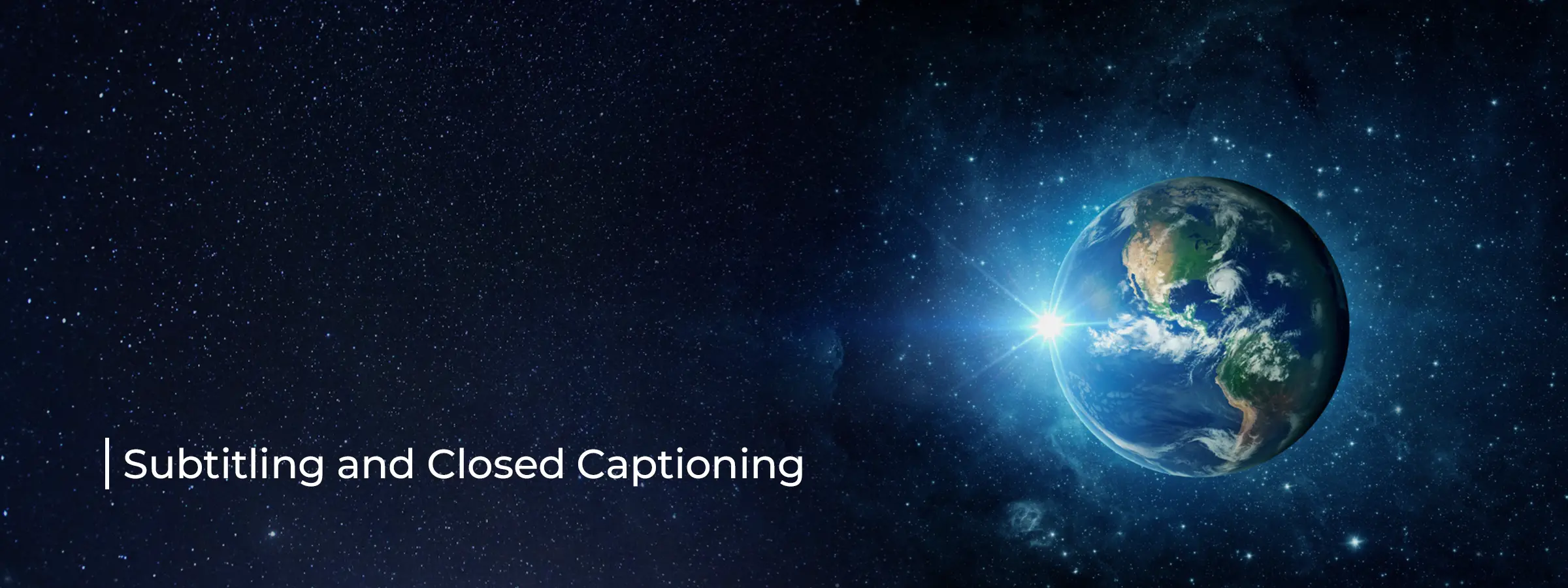
Subtitling and closed captioning are critical in making audio-visual content accessible to a broader audience, including non-native speakers and the deaf or hard-of-hearing community. Language Service Providers (LSPs) offer various services within this domain to cater to diverse needs and platforms.
• Standard Subtitling: Creating subtitles in the same language as the audio can help viewers understand the dialogue better, especially if the audio is unclear or if the viewer is not a native speaker.
• SDH (Subtitles for the Deaf and Hard-of-Hearing): These are specially formatted subtitles intended for viewers who are deaf or hard of hearing. SDH includes the dialogue and descriptions of significant sound effects, speaker identification, and other auditory cues.
• Translational Subtitling: Translating the spoken content into another language with subtitles, making content accessible to audiences that speak different languages.
• Live Subtitling: Providing real-time subtitles for live broadcasts or events, such as news programs, sports events, and live speeches. This requires specialised skills to ensure accuracy and timeliness.
• Closed Captioning: Similar to SDH, closed captions are designed for the deaf and hard-of-hearing audience but are available as a selectable option that can be turned on or off by the viewer.
• Open Captioning: These captions are permanently visible on the video content and cannot be turned off. Open captioning is helpful for environments where the audio cannot be heard, such as public displays or noisy areas.
• Interactive Captions: Captions that viewers can interact with, allowing them to click on specific terms or phrases for definitions, translations, or more information. This is particularly useful for educational content.
• Caption Formatting and Styling: Tailoring the appearance of subtitles and captions (font, colour, size, placement) to ensure they are readable and non-intrusive while also considering the aesthetic and branding of the content.
• Time-coded Captioning: Creating captions that are accurately synchronised with the audio and visual elements of the content, ensuring that they appear at precisely the right moment.
• Multi-Language Subtitling: Offering subtitling services in multiple languages for the same content, enabling it to reach a global audience.
• Subtitle Quality Control and Editing: Reviewing and editing subtitles for accuracy, readability, and compliance with specific guidelines or standards.
• Subtitle Integration: Embedding or hardcoding subtitles into the video file, ensuring they are always visible regardless of the platform or device used for playback.
• Subtitle Conversion: Converting subtitles into different formats to ensure compatibility with various video platforms, software, and devices.
• Accessibility Consulting: Providing expert advice on how to make audio-visual content more accessible through effective use of subtitles and closed captions, including compliance with legal and platform-specific requirements.
• Automated Subtitling: Speech recognition technology generates subtitles automatically, which are then edited by humans to ensure accuracy and quality.
These services cater to the needs of broadcasters, filmmakers, video content creators, educational institutions, and corporate entities, ensuring their content is accessible, inclusive, and compliant with regulatory standards.
© 2024 WHITE GLOBE GROUP PVT LTD